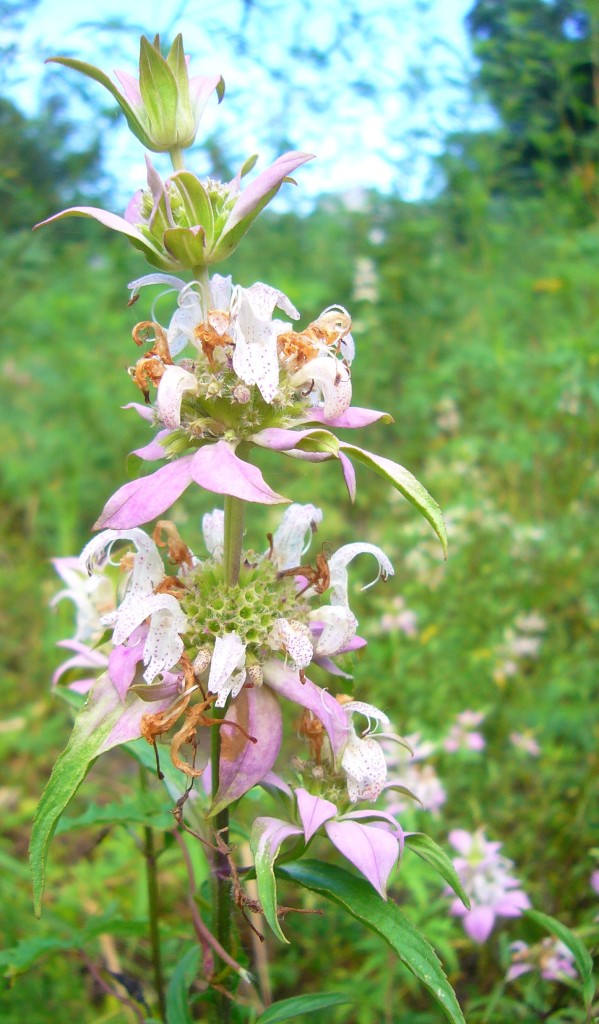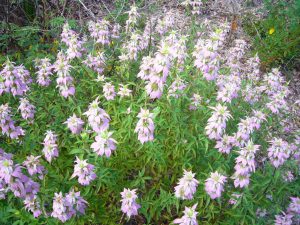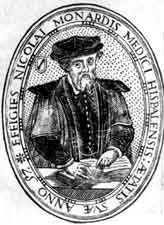Monarda Punctata: Bergamot’s Bud
First the good news: Horsemint makes a nice, intentionally weak tea. Stronger brews are used in herbal medicine. The Native Americans made a “sweating” tea from it to treat colds. The major oil in Horsemint is thymol. Externally it’s an antiseptic and vermifuge, internally, in large amounts, the plant can be fatal. That’s the bad news. So, as I said it makes a nice, intentionally weak, tea.
Horsemint is one of those plants that you seem to never notice until you learn to recognize it, then you see it every so often. It tends to grow in small colonies and near each other. If you find one, you will usually find another not too far away. They can vary in size from six inches to three feet but always very showy and its extroverted colors can last for months. You can propagate it by seeds or cuttings. I dug mine up and carried it home where it has a very sunny, well-watered spot in sandy soil.
The creamy lilac-spotted flowers (its bracts are pink) attract honeybees, bumblebees, miner bees, plasterer bees, swallowtail butterfly as well as the endangered Lycaenides melissa samuelis (Karner Blue.) Hummingbirds like it as well. Most mammals know enough to leave the plant alone. Horsemint grows from eastern Northern Canada down to Florida, west to Michigan and New Mexico and California, also into eastern Mexico. A southern variety, Monarda punctata var. punctarta, grows south of Pennsylvania and out to Texas. There are about 20 different Monardas in the United States.
Horsemint has the highest thymol content of all the mints. It is more than an antiseptic, mite-killer and cough-syrup ingredient. As a depressant, it is one of the most commonly abused substances among anesthesiologists and nurses. If thymol were discovered today it would be a prescription drug. There have been some thoughts towards regulating the species but it is so common in so many places that hasn’t been done. Thymol, incidentally, is also one of the 600 or so ingredients added to cigarettes to “improve” the flavor.
While thymol has a dark side it also has beneficial aspects. It is one of two chemicals in the horsemint — the other being carvacrol — which prevent the breakdown of acetylcholine, the stuff that makes memory possible. One of the symptoms of Alzheimer’s Disease is reduction in acetylcholine. Unlike a drug now used to prevent the break down of acetuylcholine — tacrine hydrochloride — thymol and carvacrol are not as rough on the liver. One could even make a shampoo out of horsemint and perhaps get the benefits.
As for the plant’s botanical name: Monarda is for Nicholas Monardes (1493-1588), a Spanish physician and botanist who mentioned this flower in his 1569 work on the flora of North America called “Joyfull Newes Out Of The Newe Founde Worlde”. Punctata is Latin for point, or in this case “dotted” because the flower petals have pink dots. The plant’s name is said: moe-NAR-duh punk-TAY-tuh.
Whether as a weak tea, a stronger brew for the flu, or a poultice for arthritis, the Horsemint, or Spotted Beebalm, is a pretty plant to spot while foraging.
Green Deane’s “Itemized” Plant Profile
IDENTIFICATION: Herb, sometimes woody, shrubby, gangly, multi-branched, opposite leaves and square stems. The stems and leaves are hairy. Flowers small, inconspicuous, but arranged in showy heads of pink to lavender bracts. Flower tubes are pale yellow with purple spots, less than an inch long, leaves smells like Greek oregano.
TIME OF YEAR: Can be year round in Florida but favors late summer and fall, in northern climates flowers June to October depending where you are.
ENVIRONMENT: Likes moist but well drained soil and sunny conditions, but can survive on rainwater in old fields and on roadsides.
METHOD OF PREPARATION: Leaves and flowers for weak tea, some report the leaves can use chopped up and use to flavor salads. Hanging leaves in the house leaves a nice scent.




